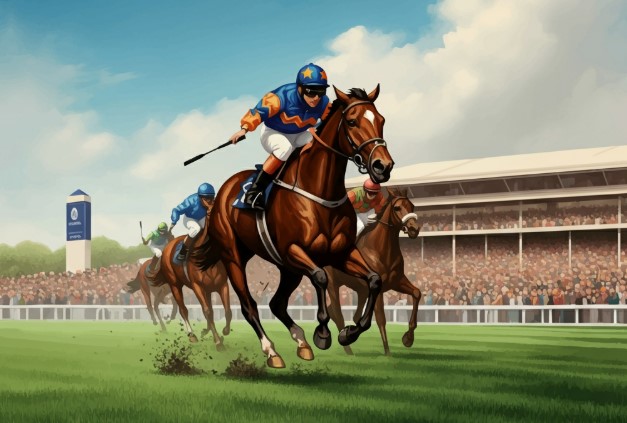Racehorses are celebrated for their power, speed, and agility. Yet behind every electrifying gallop lies a complex equation of preparation, natural ability, and strategy. Two critical factors often debated by industry experts are form and fitness. Which has the greater impact on a horse’s performance? And how can trainers and bettors alike gain an edge in optimizing or predicting success?
This blog will explore the intricacies of these elements, clarify their differences, and discuss how platforms such as Turf Universel provide insights that guide decisions in today’s competitive horse racing scene. Buckle up as we dissect what truly propels a racehorse to the winner’s circle.
Understanding Fitness in Racehorses
Fitness refers to the physical conditioning of a racehorse and its ability to sustain top performance. Think of it as the engine that powers every stride. Without fitness, even the most talented horse won’t last the distance or outrun its peers.
Components of Racehorse Fitness
Several factors contribute to fitness in racehorses:
- Endurance training: Regular schooling and long-distance gallops build a horse’s stamina to endure an entire race while maintaining speed.
- Strength conditioning: Exercises such as uphill training or swimming are designed to enhance muscle power and overall performance capacity.
- Recovery rate: A fitter horse recovers quicker between strenuous runs, making it more apt to handle successive races without a drop in form.
- Diet and nutrition: A balanced and performance-focused diet ensures a horse remains in peak physical shape.
Fitness can be measured using a range of indicators, such as heart rate recovery, muscle tone, and the quality of trackwork a horse produces before a race. Importantly, fitness alone cannot guarantee a win if other factors, like mental sharpness and preparation, are absent.
Why Fitness Is Essential
Fitness directly influences a horse’s race-day stamina and ability to handle the physicality of high-intensity races. For instance, horses competing in longer-distance races (such as a marathon or steeplechase) rely heavily on superior fitness to outrun their competition. A lack of conditioning not only leads to slower times but also increases the likelihood of injury.
What Is Form in Horse Racing?
While fitness assesses physical readiness, form evaluates race-day performance. Simply put, form is a horse’s record or pattern of recent race results and behavior. It’s a snapshot of how a horse is performing relative to rivals and the conditions of competition at a particular moment.
Decoding Form Guides
A horse’s form is typically displayed in detailed guides that outline its:
- Previous race results (wins, places, or losses).
- Conditions of success (track type, distance, or weather preferences).
- Consistency (how often it delivers top-tier performances).
- Jockey and trainer performance (collaboration impact).
Platforms like Turf Universel utilize detailed form data to provide owners, punters, and trainers with in-depth analytics. With form, you can spot trends, such as a horse performing better on turf tracks, excelling over shorter distances, or thriving in calmer climates.
Form as a Predictor of Success
A horse’s past performance doesn’t just inform its potential; it also helps detect unforeseen opportunities. For example:
- A horse might repeatedly struggle on a muddy or dirt surface but shine on firm turf.
- Another horse may improve only with its preferred jockey or trainer handling.
By integrating historical insights into your predictions, form serves as a valuable tool for reliably assessing upcoming races.
Fitness Versus Form Which Wins the Debate?
The complexity arises when analyzing whether fitness or form plays a greater role in performance. While the two are intertwined, their individual impacts manifest in specific scenarios.
The Case for Fitness
A horse’s physical condition pits fitness at the forefront of its capabilities. Fitter horses often take longer strides, maintain pace longer, and handle competitive bumping better than their less-conditioned peers. Fitness also reduces the risk of injury.
However, overtraining can negatively affect outcomes. A horse’s fitness regimen must be balanced, incorporating rest periods between intense preparatory schedules to avoid burnout.
The Argument for Form
While fitness shows a horse’s potential, form illustrates how that potential has translated into performances. A horse with superior form often comes mentally prepared with race-day sharpness unmatched by peers. Furthermore, specific trends in form help predict how well a horse will adapt to unique race conditions.
Still, form has its pitfalls. Race results can be skewed by several uncontrollable factors, such as external interference during competition or simply an off-day.
A Combined Approach
Ultimately, pitting fitness against form may not yield a clear winner. Instead, consider them complementary attributes:
- Fitness sets the foundation for maximum ability.
- Form reflects how effectively that ability gets displayed.
When combined effectively, you achieve the best possible outcome. For trainers and bettors, the key lies in data blending these attributes for insight-driven decision-making.
How Turf Universel Enhances Decision Making
For horse racing enthusiasts, platforms like Turf Universel simplify the process of analyzing both form and fitness. Whether you’re a trainer looking to tweak regiment schedules or a bettor deciding between two near-equal contenders, Turf Universel synthesizes the data you need.
Key Features of Turf Universel:
- Real-time fitness and performance analytics.
- Easy-to-read form guides with insights on past race conditions.
- Race-day predictions leveraging aggregated horse stats.
- Community forums to share insights with fellow enthusiasts.
Tools like these eliminate guesswork, allowing you to approach racing with confidence and clarity.
The Role of Trainers and Jockeys
It’s worth noting that trainers and jockeys heavily influence both fitness and form. A skilled trainer ensures a horse achieves peak fitness while leveraging data to prepare the horse for its ideal conditions. Similarly, an experienced jockey can harness form insights to ride tactically, conserving energy or bursting into the lead at the perfect time.
Collaboration between trainer and jockey often determines whether form and fitness align harmoniously.
Actionable Tips for Trainers and Bettors
For Trainers:
- Use fitness technology like heart monitors to track progress.
- Schedule workouts tailored to your horse’s race type and distance.
- Regularly evaluate diet plans to ensure sustained stamina.
For Bettors:
- Don’t dismiss a fit horse solely based on poor form unless conditions clearly don’t favor it.
- Pay attention to trainers and jockeys with consistently successful records on specific track types.
- Use platforms like Turf Universel to compare fitness and form metrics side by side.
Finding the Perfect Balance
Both form and fitness are essential pieces of the puzzle in racehorse performance. Fitness determines how ready a horse is physically, while form details how well it channels that ability on race day. Striking the right balance between these two factors—and making data-driven decisions through tools like Turf Universel—can give trainers and bettors a critical edge.
Start leveraging insights today and maximize your outcomes in the racing world.


